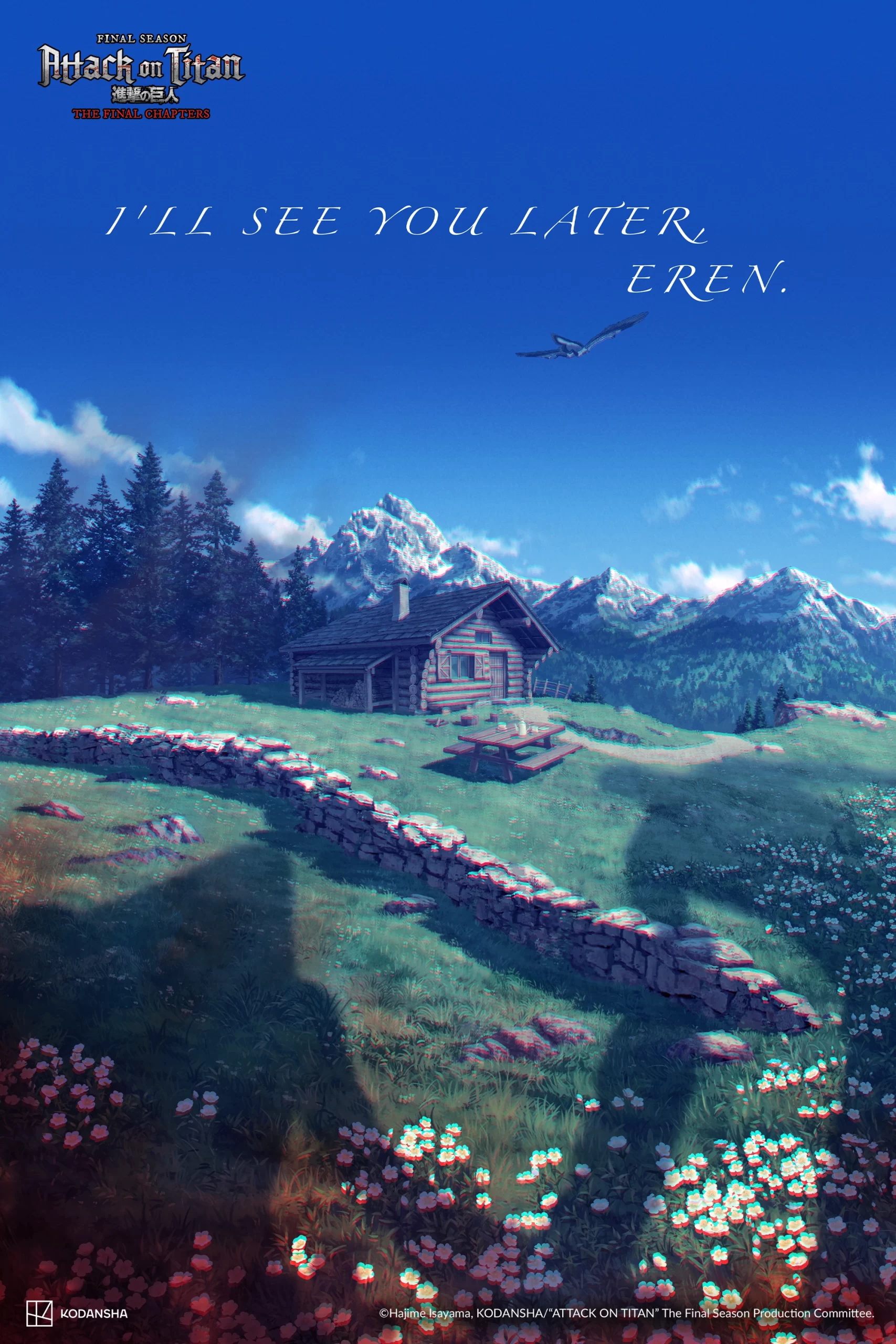Over a decade since it began, the massively popular anime series “Attack on Titan” has finally reached its end.
Written by Hajime Isayama, “Attack on Titan”, known in Japan as Shingeki no Kyojin, debuted as a manga in September of 2009. In April of 2013, it was picked up by WIT Studio for an anime adaptation, where it was met with universal acclaim from both critics and casual fans alike, running until November 4, 2023.
“It’s an amazing story with some of the craziest foreshadowing and plot twists,”Junior Mateo Soto said. “The cinematography was fantastic, the characters and the plot were all top tier.”
The series follows Eren Yeager, a young boy who lives in a city surrounded by giant walls constructed to keep out large humanoid creatures, called titans. After a titan kills his mother, he vows to destroy every last one, enlisting himself and his friends in the Survey Corps, a military branch specializing in using grappling hooks and swords to take down titans.
Junior Reese Havird gives her take on why she’s stayed a fan of the series for so long.
“I started watching it in 2018. I felt it was cool, like the concept of an enclosed community having to fight against these beasts that want to eat them. It’s like dragons, but they run funny,” Havird said.
Despite its long run, “Attack on Titan” continues to remain in the cultural zeitgeist. Whether it’s through clothing, theme parks, or even weapons and outfits in Fortnite, the mark that the series has left on the world is larger than many shows could even imagine. However, even with its popularity, some fans are unhappy with the direction the series took.
The fourth season, titled “Attack on Titan: The Final Season”, has had somewhat of a mixed reaction from fans. Whereas the first three seasons keep a relatively similar tone and setting, the fourth and final season of the show abandons the status quo, opening the season featuring a group of characters and setting viewers have never seen before.
“I think it was a really big tonal change,” senior Maureen Hulburt said. “But I think it makes sense as the viewer and the characters in the story begin to learn more. You learn at the same time as the characters do. So it kind of makes sense once you know the truth of things for the tone to change.”
Aside from the different direction the season took, the other major complaint fans had was its release schedule. Season four, which started on December 7, 2020, took nearly three years to complete, whereas the other seasons wrapped up in under a year. The studio in charge of animating season four, MAPPA, decided they would do a different release strategy for the season; MAPPA released 17 episodes starting in 2020 and 11 more in 2022, labeling them as Part One and Two respectively. The issue came with Part Three, released in 2023, which had its own first and second parts, with the final episode being given the title “Attack on Titan: The Final Chapters: Part 2”, upsetting some fans.
“I think it would have been smarter if they made it into a movie instead of just like a fourth season, third part or whatever,” Havird adds. “They’re milking it, and they’re also just destroying their own fan base.”
This is not the first time the fanbase was unhappy with the series. When the manga ended in 2021, thousands stormed to the internet to share their gripes with its conclusion, some even advising new fans to just stop watching after season three.
“I think he did the best with what he had,” Soto argued. “He tied up most loose ends and ended in a way that would satisfy someone who understands the characters.”
Regardless of any controversy the series faced, the show’s traction was not halted, ultimately crashing the anime streaming service Crunchyroll through the sheer volume of users attempting to watch the finale.
Being able to stand the test of time for over a decade is something that not many series are able to boast, let alone one from another continent. Whether you’ve been a fan since its release or have never watched it, the footprint this series has left on the entertainment world is undeniably colossal.















